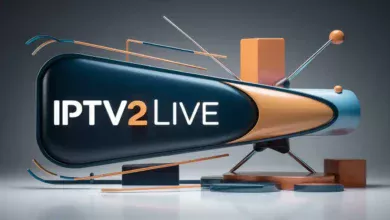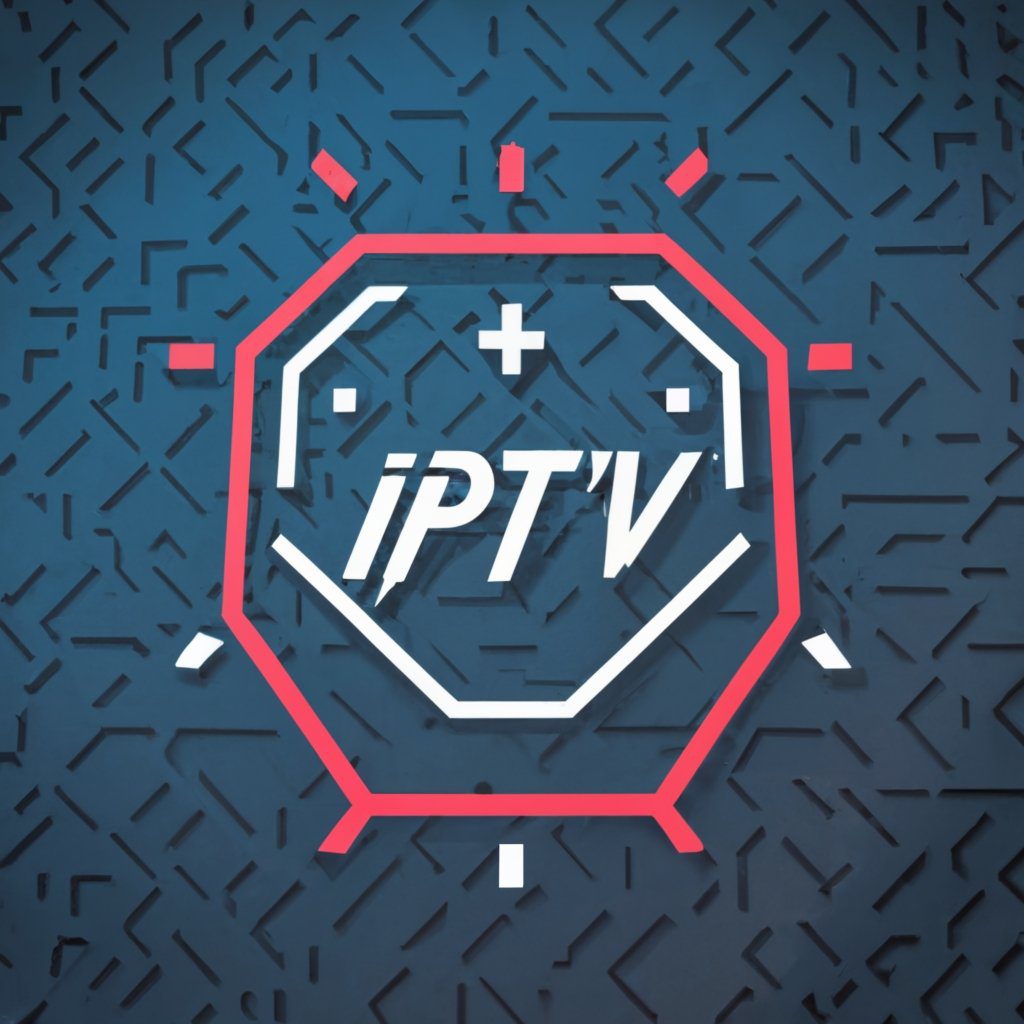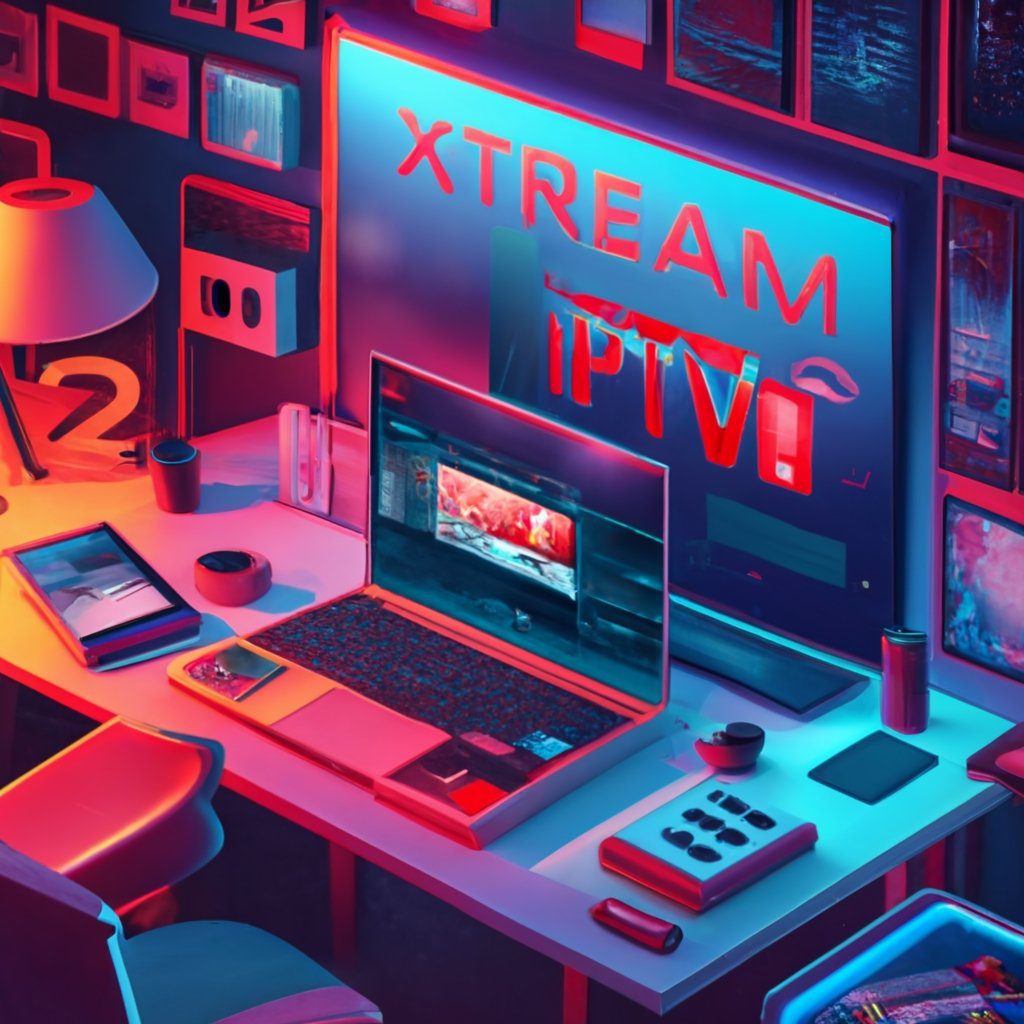Introduction
Are you experiencing issues with your IPTV service? Don’t worry, you’re not alone. IPTV, or Internet Protocol Television, has revolutionized the way we consume television content, offering a convenient and flexible alternative to traditional cable or satellite TV. However, like any technology, it’s not without its challenges. In this article, we will explore common IPTV issues and provide you with practical troubleshooting techniques and fixes to help you enjoy uninterrupted streaming. So, let’s dive in!
1. Introduction to IPTV
IPTV stands for Internet Protocol Television, a digital television broadcasting protocol that uses the internet to deliver TV content. Unlike traditional TV broadcasting methods, IPTV offers greater flexibility and on-demand access to a wide range of channels and content. With IPTV, you can stream your favorite shows, movies, and sports events anytime, anywhere, as long as you have an internet connection and a compatible device.
2. IPTV Setup and Installation
Setting up IPTV may seem daunting at first, but with the right guidance, it can be a straightforward process. Here are some essential steps to follow for a successful IPTV setup:
- Step 1: Choose a Reliable IPTV Service Provider: Research and select a reputable IPTV service provider that offers a wide selection of channels, reliable streaming, and good customer support.
- Step 2: Check Device Compatibility: Ensure that your device, such as a smart TV, streaming box, or IPTV receiver, is compatible with the IPTV service. Check the system requirements and supported devices before subscribing.
- Step 3: Connect to a Stable Internet Connection: A stable and high-speed internet connection is crucial for smooth IPTV streaming. Connect your device to a wired Ethernet connection or use a strong Wi-Fi signal for optimal performance.
- Step 4: Install the IPTV Player App: Depending on your device, download and install a compatible IPTV player app. Popular options include VLC Media Player, IPTV Smarters, and TiviMate.
- Step 5: Configure the IPTV Player App: Open the IPTV player app and navigate to the settings menu. Enter the necessary information provided by your IPTV service provider, such as the IPTV playlist URL or M3U file. Save the settings and proceed to the main interface of the app.
- Step 6: Browse and Select Channels: Once you have successfully configured the IPTV player app, browse through the available channels and content. Most apps provide a user-friendly interface with various categories and genres to choose from. Select your preferred channel or program to start streaming.
- Step 7: Troubleshooting Player App Issues: If you encounter any issues with the IPTV player app, such as crashes, freezing, or playback errors, try the following troubleshooting steps:
- Update the app to the latest version: Developers frequently release updates to address bugs and improve performance.
- Clear cache and data: In the settings of the app, find the option to clear cache and data. This can help resolve any temporary issues.
- Restart the app and device: Close the app completely and restart your device. This can refresh the system and resolve minor glitches.
- Reinstall the app: If all else fails, uninstall the app and reinstall it from a reliable source.
- Step 8: Seek Technical Support: If you’re unable to resolve the IPTV player app issues on your own, reach out to the app’s support team or consult online forums and communities for assistance.

3. Buffering Issues and Solutions (IPTV Troubleshooting)
Buffering is one of the most common problems faced by IPTV users. It occurs when the streaming content pauses or loads slowly, causing interruptions in the viewing experience. Here are some troubleshooting tips to overcome buffering issues:
- Check Your Internet Connection: Ensure that you have a stable and high-speed internet connection. Run a speed test to determine if your connection meets the recommended requirements for streaming IPTV.
- Use a Wired Connection: If you’re using Wi-Fi, consider connecting your device directly to the router using an Ethernet cable. Wired connections tend to be more stable and reliable than wireless connections.
- Close Background Apps: Close any unnecessary apps or programs running in the background on your device. These apps can consume bandwidth and affect the performance of your IPTV streaming.
- Adjust Buffering Settings: In your IPTV player app settings, look for options related to buffering or streaming quality. Lowering the buffering time or selecting a lower quality stream may help reduce buffering issues.
- Restart Your Router: Sometimes, restarting your router can resolve temporary network issues. Turn off the router, wait for a few seconds, and then turn it back on. Allow the router to establish a stable connection before streaming IPTV.
- Consider an IPTV VPN: If your ISP is throttling or limiting your IPTV streaming, using a virtual private network (VPN) can help bypass these restrictions and improve your streaming experience.
4. Video Freezing or Stuttering (IPTV Troubleshooting)
Video freezing or stuttering can be frustrating when watching IPTV. To troubleshoot this issue, consider the following:
- Check Internet Speed: Ensure that your internet connection is stable and meets the recommended speed for streaming. A slow connection can result in video freezing or stuttering.
- Close Background Applications: Close any unnecessary applications running on your device, as they may consume system resources and affect video playback.
- Clear Cache: Within your IPTV player app settings, find the option to clear
- cache and data. Clearing the cache can help remove any temporary files that might be causing playback issues.
- Adjust Video Quality: If the video freezing or stuttering persists, try adjusting the video quality settings within the IPTV player app. Lowering the video resolution or bitrate may improve playback performance.
- Update Firmware: Ensure that your device’s firmware is up to date. Manufacturers often release firmware updates that include bug fixes and performance improvements.
- Check Hardware Limitations: Some older or low-spec devices may struggle to handle high-definition streams. If you’re experiencing frequent video freezing or stuttering, consider using a device with better hardware capabilities.
- Restart the Device: Sometimes, a simple device restart can resolve temporary issues. Turn off your device, wait for a few seconds, and then turn it back on.
- Contact IPTV Service Provider: If the video freezing or stuttering issues persist, it’s recommended to reach out to your IPTV service provider. They may be able to provide specific troubleshooting steps or identify any server-side issues that could be causing the problem.
5. Poor Picture Quality (IPTV Troubleshooting)
If you’re facing poor picture quality while using IPTV, try the following troubleshooting techniques:
- Check Internet Speed: A slow internet connection can result in poor picture quality. Run a speed test to ensure your connection meets the recommended speed for streaming IPTV.
- Adjust Video Quality: Within your IPTV player app settings, look for options to adjust the video quality. Select a higher resolution or bitrate if your internet connection can handle it, as it can enhance the picture quality.
- Optimize Wi-Fi Signal: If you’re using Wi-Fi to connect your device, ensure that it has a strong and stable signal. Reposition your router closer to the streaming device or consider using a Wi-Fi range extender to improve signal strength.
- Consider Wired Connection: For the best possible picture quality, connect your streaming device directly to the router using an Ethernet cable. Wired connections are generally more stable and provide consistent bandwidth.
- Check HDMI Cable: If you’re using HDMI to connect your device to the TV, ensure that the cable is of good quality and properly connected. A faulty or loose HDMI cable can result in signal degradation and poor picture quality.
- Update Device Firmware: Keep your streaming device’s firmware up to date. Firmware updates often include improvements for picture quality and compatibility with streaming apps.
- Contact IPTV Service Provider: If the poor picture quality persists, get in touch with your IPTV service provider. They can verify if the issue is on their end or provide additional troubleshooting steps to resolve it.
6. Audio Problems (IPTV Troubleshooting)
Encountering audio issues can be frustrating while using IPTV. Here are some tips to troubleshoot common audio problems:
- Check Volume Settings: Ensure that the volume on your device, IPTV player app, and TV are properly adjusted. Sometimes, audio issues can be as simple as muted sound or low volume.
- Check Audio Output: Confirm that the correct audio output source is selected on your device. For example, if you’re using an external speaker or soundbar, ensure that the audio output is directed to the appropriate device.
- Restart the Device: A quick device restart can resolve temporary audio glitches. Turn off your device, wait for a few seconds, and then turn it back on.
- Check Audio Cables: If you’re using external audio devices, such as speakers or soundbars, ensure that the cables are properly connected and not damaged. Faulty cables can result in audio problems.
- Update IPTV Player App: Ensure that you have the latest version of your IPTV player app installed. Developers often release updates to address audio-related issues and improve overall performance.
- Audio Output: If you’re experiencing audio issues, try using different audio output options on your device. For example, switch between HDMI, optical, or Bluetooth audio output to see if the issue is specific to a particular output method.
- Check Audio Codec Compatibility: Some IPTV player apps may have limitations when it comes to audio codecs. Ensure that the audio codec used by the IPTV service is supported by your player app. If not, try using a different app that supports the required codec.
- Check Surround Sound Settings: If you’re using a surround sound system, ensure that the settings are properly configured. Improper speaker placement or incorrect surround sound settings can result in audio issues.
- Contact IPTV Service Provider: If the audio problems persist, reach out to your IPTV service provider for assistance. They can provide specific troubleshooting steps or identify any server-side issues that could be causing the audio problems.
7. Channel Availability Issues (IPTV Troubleshooting)
Sometimes, you may encounter issues with certain channels not being available or accessible on your IPTV service. Here’s how to troubleshoot channel availability problems:
- Check Subscription Status: Ensure that your subscription is active and up to date. Some channels may require a specific subscription package or additional fees.
- Refresh Channel List: Within your IPTV player app, look for an option to refresh or update the channel list. This can help resolve temporary channel availability issues.
- Check Channel Source: Verify if the channel you’re trying to access is a legitimate and authorized source. Some channels may be restricted or taken down due to copyright infringement or legal reasons.
- Contact IPTV Service Provider: If you’re unable to access specific channels despite having a valid subscription, get in touch with your IPTV service provider. They can verify the channel availability and troubleshoot any issues on their end.
8. Remote Control Problems (IPTV Troubleshooting)
If you’re experiencing difficulties with your IPTV remote control, consider the following troubleshooting steps:
- Check Batteries: Ensure that the batteries in your remote control are not depleted. Replace them if necessary.
- Check Line of Sight: Make sure there are no obstructions between the remote control and the IPTV device. Ensure a clear line of sight for optimal remote control functionality.
- Pair the Remote: If your IPTV device supports remote pairing, follow the manufacturer’s instructions to pair the remote control with the device. This can resolve connectivity issues.
- Try a Different Remote: If possible, try using a different remote control to determine if the issue is with the remote itself or the IPTV device.
- Use Mobile Apps as Remotes: Many IPTV services offer companion mobile apps that can be used as remote controls. Download the app and see if it provides a better control experience.
- Contact IPTV Device Manufacturer: If the remote control problems persist, reach out to the manufacturer of your IPTV device for further assistance and troubleshooting steps.
9. Internet Connection (IPTV Troubleshooting)
If you’re facing issues with your internet connection while using IPTV, try the following troubleshooting techniques:
- Restart Router and Modem: Power off your router and modem, wait for a few seconds, and then power them back on. This can help resolve temporary internet connectivity issues.
- Check Network Cables: Ensure that all network cables are securely connected. Loose or damaged cables can result in unstable internet connections.
- Move Closer to the Router: If you’re using Wi-Fi, move closer to the router to improve signal strength and reduce potential interference.
- Reduce Network Load: Limit the number of devices connected to your network. Bandwidth-intensive activities such as downloads, online gaming, or streaming on multiple devices simultaneously can affect IPTV streaming quality.
- Update Router Firmware: Check if there are any
- available firmware updates for your router. Keeping your router’s firmware up to date can improve its performance and address connectivity issues.
- Check DNS Settings: Ensure that your device is using the correct DNS settings. You can try using public DNS servers like Google DNS or OpenDNS to see if it resolves any DNS-related issues.
- Disable VPN or Proxy: If you’re using a VPN or proxy connection, try disabling it temporarily. VPNs or proxies can sometimes interfere with IPTV streaming and cause connectivity problems.
- Contact Internet Service Provider (ISP): If you’re unable to resolve the internet connection issues, reach out to your ISP for assistance. They can check for any network outages or provide further troubleshooting steps.
Conclusion
In conclusion, troubleshooting common IPTV issues can be done by following a few simple steps. By installing the IPTV player app, configuring it properly, and addressing specific problems such as buffering, video freezing, poor picture quality, audio problems, channel availability, and remote control issues, you can enhance your IPTV streaming experience. Additionally, ensuring a stable internet connection and seeking technical support when needed are crucial for resolving any persistent issues. By implementing these troubleshooting techniques, you can enjoy uninterrupted IPTV viewing and make the most out of your entertainment experience.
Frequently Asked Questions (FAQs)
Q1: Why is my IPTV player app crashing frequently? A1: IPTV player app crashes can occur due to various reasons, including compatibility issues, outdated app versions, or insufficient device resources. Try updating the app, clearing cache and data, and ensuring your device meets the app’s requirements. If the issue persists, contact the app’s support team for further assistance.
Q2: Can I use IPTV on multiple devices simultaneously? A2: It depends on your IPTV service provider and subscription plan. Some providers offer multi-screen or multi-device support, allowing you to use IPTV on multiple devices at the same time. Check with your provider for specific details and any limitations.
Q3: Why am I experiencing a delay or lag in live IPTV streams? A3: Delay or lag in live IPTV streams can be caused by factors such as network congestion, server load, or distance from the streaming server. Ensure you have a stable internet connection and try connecting to a server closer to your location for better streaming performance.
Q4: Can I record IPTV content for later viewing? A4: The ability to record IPTV content depends on the features supported by your IPTV service and player app. Some apps may have built-in recording functionality, while others may require external devices or software for recording. Check with your provider and app documentation for recording options.
Q5: Why am I getting “content not available” or “channel unavailable” messages on certain channels? A5: “Content not available” or “channel unavailable” messages can occur due to various reasons, such as geo-restrictions, channel outages, or licensing limitations. Confirm your subscription status, ensure proper channel sources, and contact your IPTV service provider for further assistance if the issue persists.





